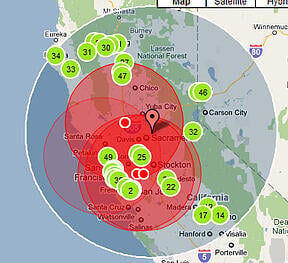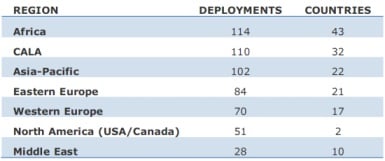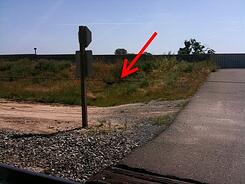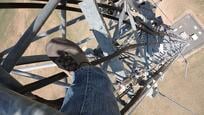Wireless backhaul, also known as fixed wireless bridges, has become a standard means of creating a microwave communication between locations; whether building to building, last mile wireless to connect remote locations to a network presence, or for connecting devices like IP video cameras, access control, SCADA devices, client devices, or phones to networks. Wireless backhaul can be deployed in several network configurations.
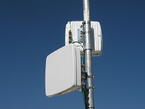 A point to point wireless bridge is when only two microwave radio ends are bridged together to create a single wireless network path. Point to point wireless links are an ideal complement or replacement to leased lines and fiber. A point to point microwave link is used to create a wireless bridge network between two buildings to connect LAN connectivity or for creating a microwave link between two towers to join two WAN network segments together across large distances. Point to point wireless bridges can be licensed microwave links or unlicensed wireless Ethernet bridges and can provide throughput as low as 10Mbps up to GigE full duplex (with gigabit wireless).
A point to point wireless bridge is when only two microwave radio ends are bridged together to create a single wireless network path. Point to point wireless links are an ideal complement or replacement to leased lines and fiber. A point to point microwave link is used to create a wireless bridge network between two buildings to connect LAN connectivity or for creating a microwave link between two towers to join two WAN network segments together across large distances. Point to point wireless bridges can be licensed microwave links or unlicensed wireless Ethernet bridges and can provide throughput as low as 10Mbps up to GigE full duplex (with gigabit wireless).
Licensed microwave links used for point to point wireless backhaul operate in the 6GHz, 11GHz, 18GHz, and 23GHz frequencies and provide true full duplex wireless Ethernet and TDM communications. Licensed microwave links can provide up to 366Mbps full duplex or 732Mbps aggregate throughput using a single radio unit. Dual radio units can be combined on a single antenna to provide double the bandwidth and complete failover redundancy.
A few exceptions are the 24GHz microwave links that are unlicensed but work just like the licensed 23GHz microwave links and provide the full duplex connectivity and the 60GHz millimeter wave systems that provide up to full duplex gigabit wireless backhaul. There is also the 80GHz millimeter wave E-band that is a registered frequency that is used to provide gigabit wireless links. Unlicensed point to point wireless Ethernet bridges typically communicate in TDD because they use the same frequency channel to talk and listen. They can provide up to 300Mbps aggregate throughput.
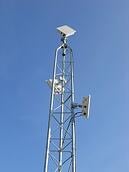
Point to multipoint wireless Ethernet bridges use a hub spoke configuration using a Base Station Unit ("BSU" or "AP") that communicates with multiple Subscriber Units. This is similar to a cellular network where multiple mobile devices talk back to a cell tower location. Point to multipoint wireless backhaul systems are ideal for interconnecting campus buildings, security systems, control systems, IP video surveillance cameras, WISP applications, integrating remote business sites, or installing last mile connections. Point to multipoint wireless bridges operate in the unlicensed wireless frequency bands of 900MHz, 2.4GHz, 5.3GHz, 5.4GHz, or 5.8GHz. Point to multipoint wireless Ethernet bridges can provide up to 300Mbps aggregate throughput.
Wireless mesh configurations are used to create a wireless network where a radio node can communicate with two or more other wireless mesh nodes. Wireless mesh networks offer great redundancy. If one wireless mesh node can no longer operate, all the other wireless mesh nodes can still communicate with each other, directly or through one or more intermediate outdoor wireless bridge links. Each wireless Ethernet bridge link can send and receive messages in a wireless mesh network. Each link also functions as a router and can relay messages for its neighbors. Through the relaying process, a packet of wireless data will find its way to its destination, passing through intermediate links with reliable communication.
Mesh wireless backhaul networks are typically configured in a star topology or can be in a daisy chain configuration. They are used a lot in networks for wireless video backhaul and municipal wireless networks. Wireless mesh radios operate in unlicensed wireless backhaul frequencies like that of point to multipoint wireless bridges and can provide up to 300Mbps aggregate throughput.





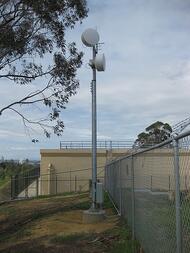 As the USA spends millions lobbying for a fiber build out and billions more slowly deploying a fiber backhaul infrastructure the rest of the world is leap frogging us by skipping over a fiber infrastructure by rapidly deploying wireless backhaul using microwave communications and technologies like
As the USA spends millions lobbying for a fiber build out and billions more slowly deploying a fiber backhaul infrastructure the rest of the world is leap frogging us by skipping over a fiber infrastructure by rapidly deploying wireless backhaul using microwave communications and technologies like 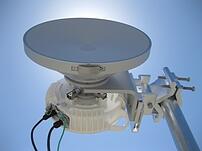
 Many cities have tried a wireless installation to provide complete city wide Wi-Fi connectivity and have failed. In many cases the city governments, that have no staff trained and experienced in outdoor wireless backhaul and outdoor Wi-Fi systems, that tried to deploy the outdoor Wi-Fi technology rather than an outdoor
Many cities have tried a wireless installation to provide complete city wide Wi-Fi connectivity and have failed. In many cases the city governments, that have no staff trained and experienced in outdoor wireless backhaul and outdoor Wi-Fi systems, that tried to deploy the outdoor Wi-Fi technology rather than an outdoor 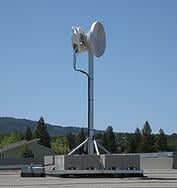 So how does someone that is not a wireless backhaul expert decide what the right
So how does someone that is not a wireless backhaul expert decide what the right 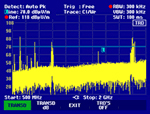
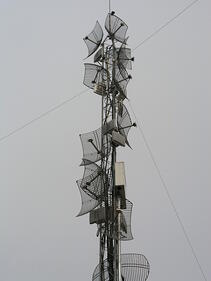 As more and more people get tempted with the thought of 100Mbps, up to 300Mbps providing an extremely fast ROI compared to a leased telco line, more and more unlicensed wireless backhaul will be deployed. The one thing that that people don't understand is that to get the full throughput the system must run at full modulation and channel width with limited wireless interference. This is something that the manufactures forget to mention. Because people are not controlling their RF signals by deploying so called plug and play outdoor wireless bridge systems and using wide beam antennas at full transmit power the amount of interference is going to explode.
As more and more people get tempted with the thought of 100Mbps, up to 300Mbps providing an extremely fast ROI compared to a leased telco line, more and more unlicensed wireless backhaul will be deployed. The one thing that that people don't understand is that to get the full throughput the system must run at full modulation and channel width with limited wireless interference. This is something that the manufactures forget to mention. Because people are not controlling their RF signals by deploying so called plug and play outdoor wireless bridge systems and using wide beam antennas at full transmit power the amount of interference is going to explode.